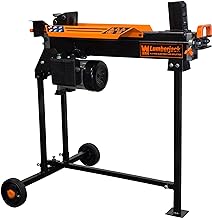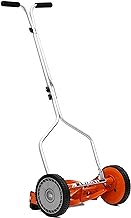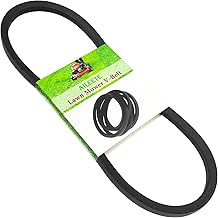5 important factors worth considering when looking for the best log splitter
When you’re looking to buy a log splitter, it can be overwhelming with so many options available. Knowing the important factors to think about can help you make a smart choice. Things like power, efficiency, portability, and safety features all play a big role in how well the tool will work and last. By understanding these factors, you can make a decision that fits your needs and preferences.
See our guide to the best log splitter.
Type of log splitter (manual, electric, gas-powered)
When deciding on a log splitter to buy, it’s important to think about manual, electric, and gas-powered options. Manual log splitters involve more hands-on work but can be rewarding for those who like physical labor. Electric and gas-powered log splitters are faster and more powerful.
Each type of log splitter has its own benefits. Electric log splitters are good for smaller jobs, balancing power and convenience. Gas-powered log splitters are better for heavy-duty tasks, offering strength and speed. However, they can be pricier to maintain.
For environmentally conscious buyers, electric log splitters are a eco-friendly choice. They don’t emit any harmful emissions when in use. On the other hand, those who need mobility and power might prefer gas-powered log splitters, especially for big jobs. The decision largely depends on factors like workload, budget, and environmental impact.
Choosing the right log splitter can greatly improve the wood-splitting process, making it easier and more efficient based on individual needs and preferences.
Splitting force capacity
When buying a log splitter, it’s important to consider its splitting force capacity. This capacity directly impacts how well the machine can handle different types of wood. A higher force capacity means easier log splitting, which makes it less tiring for the person operating the machine. It also allows you to handle larger and tougher logs more easily, increasing your productivity. Choosing a log splitter with a strong force capacity ensures smoother operation and better output in the long run.
Safety is another important factor to think about when considering splitting force capacity. Matching the force capacity to the size and hardness of the logs being split can reduce the risk of accidents. A machine that can handle the workload effectively lowers the chances of logs slipping or getting stuck, creating a safer work environment. By selecting a log splitter with the right force capacity, you can work more efficiently, spend less time on each log, and avoid getting tired. Taking the time to choose a log splitter with an optimal force capacity is key to a smooth and safe wood-splitting experience.
Maximum log length and diameter
When selecting a log splitter, it’s important to find the right balance between efficiency and practicality. Choosing a splitter with a large capacity might seem appealing, but you should consider your actual needs. If you usually work with smaller logs, getting a splitter with a huge capacity could lead to unnecessary costs and complications. On the other hand, underestimating the sizes of logs you typically handle can make your work less efficient and more frustrating. Finding the perfect size for your usual workload will help you work smoothly and be more productive.
In addition to technical specs, you should also think about your physical abilities and work environment when deciding on the best log length and diameter for your splitter. Working with very large logs can be dangerous and strain your muscles, while very small logs may require frequent reloading, slowing you down. Evaluating your unique situation and imagining how different log sizes would fit into your routine are important steps in making a smart choice. By finding a good balance between practicality and efficiency, you can improve your wood-splitting experience and get great results every time you use your splitter.
Portability and maneuverability
When you’re thinking about buying a log splitter, it’s important to consider how easy it is to move around. Being able to transport and position your log splitter easily can really make a difference in how quickly and conveniently you can split wood. Choosing a portable log splitter means you can take it to wherever you need it, instead of struggling to carry heavy logs back and forth. This not only saves time and effort but also reduces the risk of injuries from lifting heavy objects. A log splitter that is easy to maneuver adds to this by allowing you to navigate through tight spaces easily, ensuring you can split logs wherever you need to. Buying a log splitter that is both portable and maneuverable can greatly improve your wood-splitting experience, making the process smoother, safer, and more efficient overall.
Safety features and ease of use
When buying a log splitter, it’s important to prioritize safety and how easy it is to use. A machine with advanced safety features can protect you from accidents and give you peace of mind while using it. Look for log splitters that have dual-handed operation, automatic shut-off, and safety interlocks to keep you safe. Thinking about safety while making your decision not only keeps you safe but also lowers the risk of injuries, making your wood-splitting tasks stress-free and secure.
In addition, focusing on ease of use is key for improving efficiency and productivity. Choosing a log splitter that is user-friendly and easy to understand can make your experience better. Look for models with comfortable handles, adjustable settings, and simple controls to make splitting wood easier and save time. By picking machines that are easy to use, you make your operation smoother and wood-splitting sessions more efficient and enjoyable. In the end, selecting a log splitter that has strong safety features and an easy design ensures a smooth and satisfying wood-splitting experience for all users, whether they are beginners or experienced.
Conclusion
In today’s fast-paced world, the log splitter is like a superhero when it comes to making your life easier. It can quickly turn big logs into smaller pieces, saving you time and energy. The log splitter is a great example of how technology has improved woodcutting tools. Its strong design and easy-to-use features show how well technology and usefulness can work together. This machine is not just about getting the job done – it represents how far we’ve come in making things simpler and more efficient in today’s world. Want more info on lawn fertilizers, check the best lawn fertilizers.


